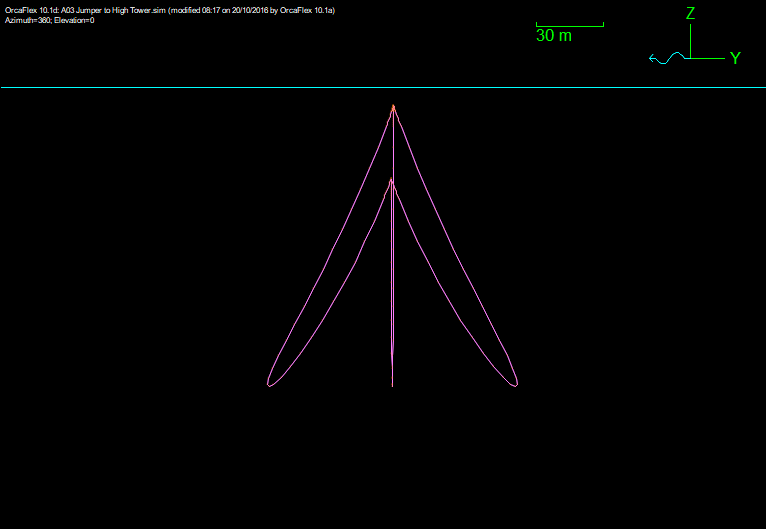
The concept consists of a number of steel catenary risers supported by a subsurface buoy which is tethered down to sea-bed by means of a single pipe tendon and anchored by means of a suction pile flexible jumpers are used to make the connection between the Floating production Unit (FPU) and the buoy. Examples are being provided to evaluate the impact of the various FPSO mooring options.Ī new riser concept is proposed by Subsea 7 for field development in deep and ultradeep waters: the Tethered Catenary Riser (TCR)-patent pending. SCRs may also be feasible but highly insulated risers are very light and prone to fatigue in-service. In the case of SHR or HRT, safety rules impose a significantly longer jumper lines to protect the FPSO from accidental Buoyancy Tank release. For turret-moored FPSO, decoupled risers allow larger FPSO offset movements and are compatible with both internal and external turret. Risers for spread-moored FPSOs are decoupled unless they can be a small number and limited to the central part of the hull. Turret-moored FPSO allow possibly a better use of the seafloor space especially in deeper water where the seafloor slope is gentler, and result in shorter flowlines. The orientation of a spread-mooring is governed by the local met ocean conditions and may not be optimal for the routing of the flowlines also compromises may have to be done with regards to flow assurance constraints. This paper presents the impact of this new trend in FPSO mooring on the design of the flow lines and risers and related impact to field layout. Whereas spread moored FPSOs prevail in larger sizes (about 2MB), new built, turret-moored, FPSOs are usually smaller in size (1MB) with external-turret offering cost and schedule benefits to the operators over internal-turrets. Over the recent years West Africa is turning to turret-moored FPSOs (internal and external), and Brazil has installed spread-moored FPSOs. 27, 2016).Ten years back the choice between turret-moored FPSO and spread-moored FPSOs was primarily dictated by local met ocean conditions: spread moored FPSO in West Africa, soft-(DICAS) mooring FPSO in Brazil, and turret-moored FPSO elsewhere. The routine has been developed and made available to the community by V. Mean horizontal drift forces A Matlab routine has been developed in order to calculate the mean horizontal drift forces on a body using the far field approach (Maruo,1960 and Newman,1967). Schmitt who is with Queen’s University Belfast.

The routine has been developed and made available to the community by P. This script may be used to convert meshes created in the opensource Salome-Meca framework to NEMOH format. Mesh conversion from opensource Salome-Meca framework to NEMOH The routine has been developed and made available to the community by M. Banos.Īlternatively, one may use the runNemoh.m Matlab routine, which allows running NEMOH with. The routine has been developed and made available to the community by L. One may use the GDFMesh.m Matlab routine to do so. The routine has been developed and made available to the community by G. One may use the nemoh2wamit_01a.m Matlab routine to do so.

NEMOH mesh files may be converted to WAMIT. Mesh conversion in Matlab Converting a NEMOH mesh to WAMIT The project is open source (under GPLv3 Licence).
#Buoyancy in orcaflex full#
However, it also comes with a package that can be imported in a python script and give the full access to the command line options, programmatically. Meshmagick is primarily a command line utility for everyday hydrodynamicists.
#Buoyancy in orcaflex software#
It can solve for hydrostatics equilibrium for a given mass, center of gravity or both and provide the clipped mesh to be used by BEM software as well as the hydrostatics parameters (stiffness matrix, position of the center of buoyancy, displacement, draft.). Meshmagick also comes with several mesh manipulation capabilities: translation, rotation, scaling, clipping by a plane, symmetry, normals flipping, normals healing (making them consistent across the mesh and outgoing), cleaning (duplicate nodes merging.).Īs of the release 1.0, meshmagick provides useful options for hydrostatics computations.
#Buoyancy in orcaflex code#
It will be particularly useful for code to code comparisons or benchmarking. Its primary goal was to be a conversion tool between major file formats for hydrodynamic computations tools (Nemoh, Wamit, Hydrostar or Diodore) and visualization tools (stl, Tecplot, Paraview). Mesh manipulation in Python with MESHMAGICK Meshmagick is a command line utility as well as a python module for the manipulation of meshes encountered in the hydrodynamics community.


 0 kommentar(er)
0 kommentar(er)
